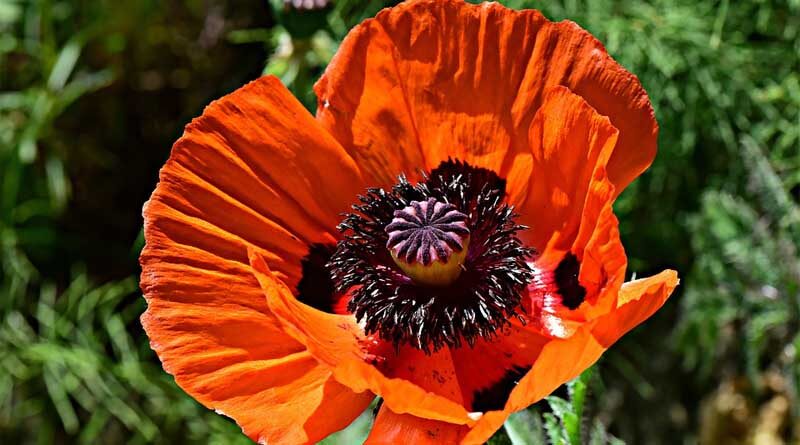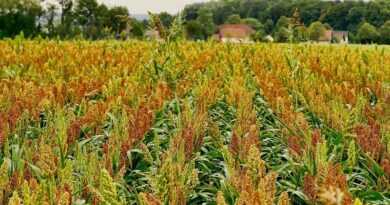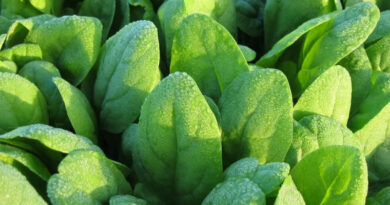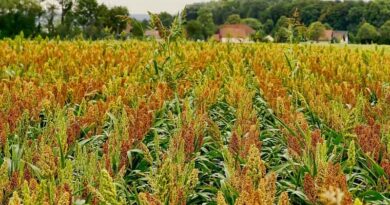Pest and Diseases affecting Opium crop in India
05 October 2022, India: Like all agricultural crops, opium is also affected by pests and diseases. These are cured by use of seed treatment before sowing, using agrochemicals, using integrated pest management techniques, etc.
Pest and Diseases in Opium
a) Fungal diseases
Downy Mildew – It is one of the most serious and wide spread diseases of opium poppy. It causes hypertrophy and curvature of the stem and flower stolks. The infection spread upwards from the lower leaves. The entire leave surface is covered by brown powder. The stem, branches and even capsules are also attacked resulting in premature death of the plants. In India, the disease appears annually on the crop from seedling stage to maturity in opium poppy growing areas of Madhya Pradesh, Uttar Pradesh and Rajasthan. The formation of capsules is adversely affected due to infection. Consequently, opium yield is significantly reduced.
Powdery Mildew (Erysiphae Polygon) – It is another minor fungal disease, however, it caused severe damage to opium crop in Rajasthan a few years ago. It is general noticed at later stage of growth of plant and is identified by white powder on leaves and capsules. Field sanitation is important to control this disease. It is recommended to use Sulphur 40% SC for Powdery mildew.
b) Seed Borne disease
There are a few seed borne disease which affect opium crop. It attacks the capsules and seeds only. The infection causes serious reduction in germination and seedlings decay. Some of them are:
Leaf Blight – The symptoms of the disease appear defused yellow spots, followed premature drying of infected leaves. During the course of parthogenesis, toxins are released by the parasites enabling it to assimilate the requisite nutrient. This disease is favoured by high temperature and heavy rainfall.
Leaf Spots – This disease is characterised by chlorotic areas on the leaf, often accompanied by curling. However, all the leaf spot diseases observed till now on this crop were of minor importance, though there is a distinct correlation between leaf spot infection and decline in morphine, codeine and thebaine content of the poppy plant.
Capsule Infection – This disease causes large velvety black spots to appear on the green capsule. It reduces the morphine, codeine and thebaine contents in opium poppy capsule. Capsule rot of opium poppy caused by a particular fungus entailing in severe damage is prevalent in Rajasthan. A severe capsule rot caused by another fungus was also observed in opium poppy crop grown at Lucknow.
Wilt & Root Rot (Fusarium Semitectum) – This disease occurs during the advanced stage of growth, causing rapid wilt and desiccation of leaves. The infection originates at the stem base and causes damping of roots. Black necrotic lesions develop on the cortex of the stem. The symptoms of the disease are characterised by withering and drying of the leaves, early maturity and low opium yield. This disease can be controlled by removing infected plants and by spraying of recommended chemicals of appropriate doses.
c) Diseases caused by bacteria
Bacterial diseases cause considerable damage to the crop. The symptoms are systematic in nature. The bacteria gains its entry to the host through stomata and water pores. In later stages it penetrates the vascular system and multiplies. The seeds from infected plants are discoloured and malformed. Another bacteria attacks all organs of opium poppy plant, the general characteristics of disease being brown to black brown spots on poppy seeds.
d) Diseases caused by viruses
Several viral diseases cause extensive damage to opium poppy. Cabbage ring spot virus was observed to be capable of infecting opium poppy. The infection rapidly becomes systemic and causes yellowing of plants and elongation of stem. Opium poppy is also susceptible to yellow virus. The symptoms appear as irregular chlorotic band along the veins which spread very fast all over the inter-veinal areas, leaving green strips along the veins. Infected plants were found to be stunted. The virus is transmitted mechanically from poppy to beans and from naturally infected beans to poppy. A mosaic disease of opium poppy has been observed in India. The disease causes stunting vein banding and deformed capsule formation. The virus is readily transmitted from the sap. The disease is transmitted by aphids.
e) Insect
The opium poppy is attacked by a number of insect pests. These insect affect and damages root (Root Weevil), leaf-stem (Aphids), floral parts (Thrips and Sawfly), and capsule (Head gall fly, Capsule weevil and Capsule borer). The weather conditions, plant diseases, and soil composition all have a bearing on opium gum yield.
(For Latest Agriculture News & Updates, follow Krishak Jagat on Google News)















